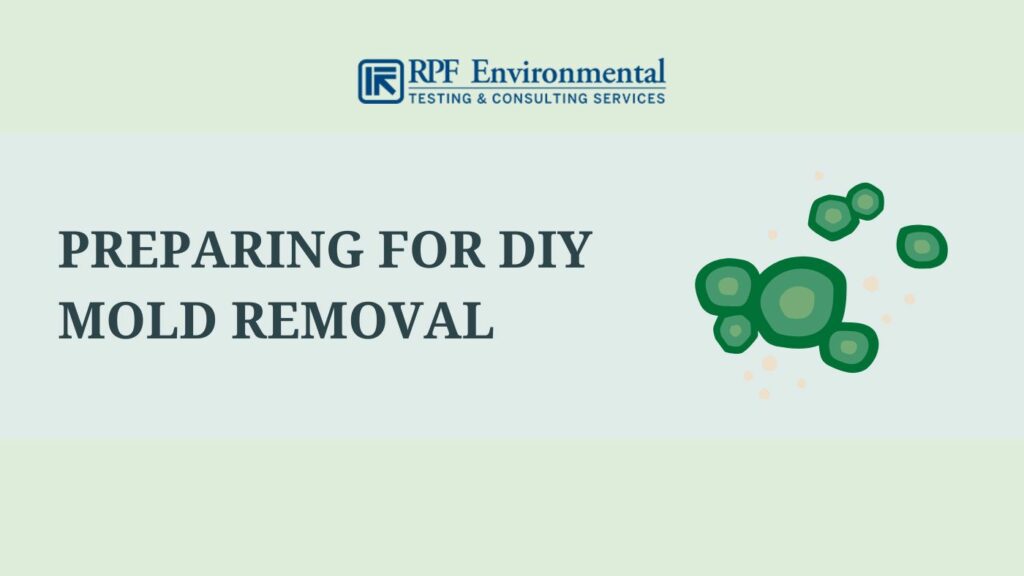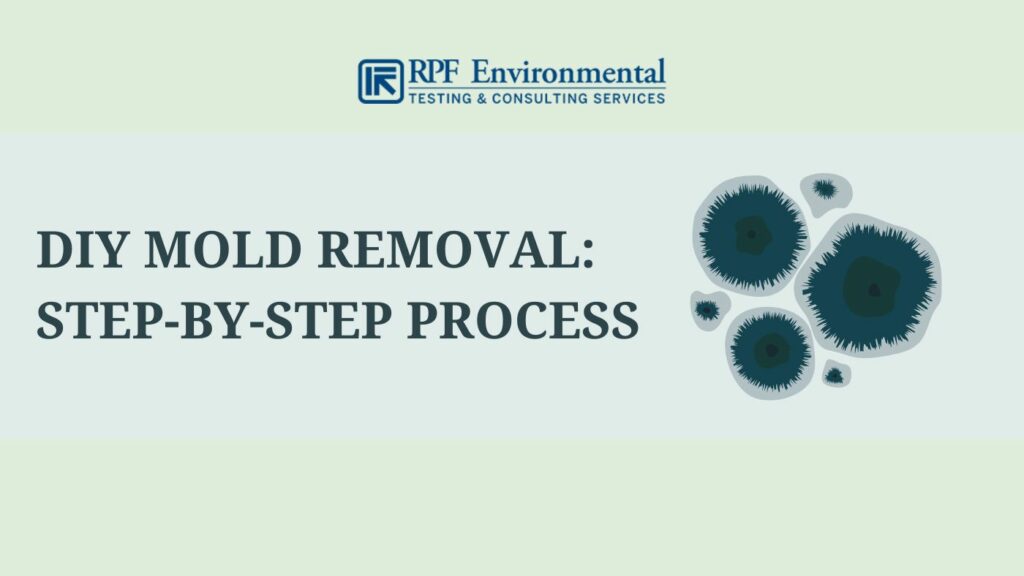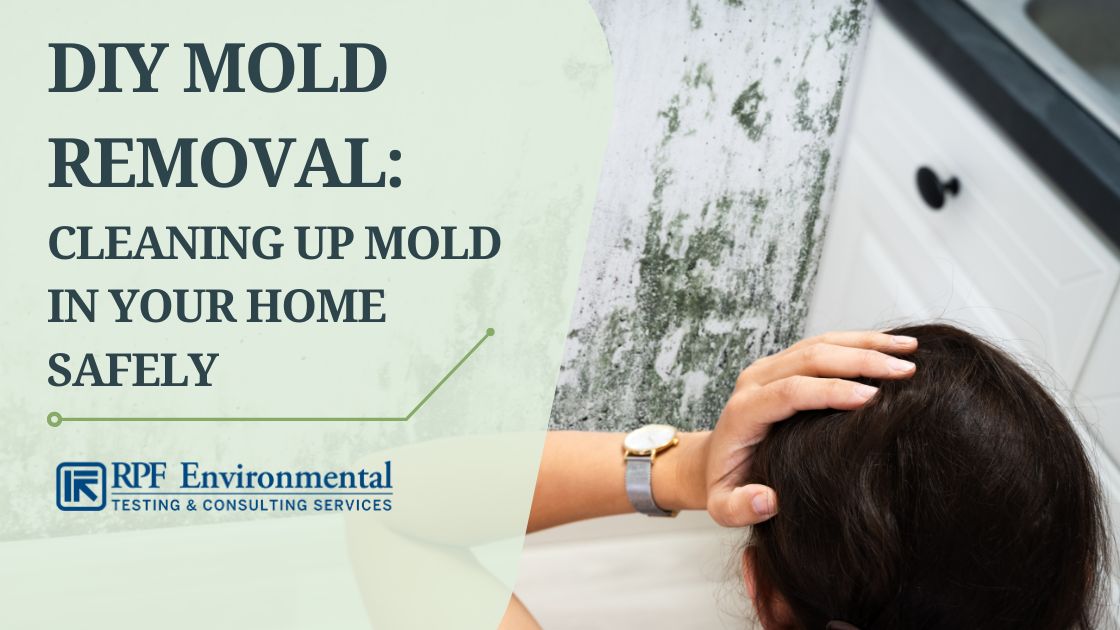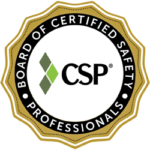Are you dealing with mold in your home and are overwhelmed and unsure of where to start? As a professional and qualified mold inspection company nationwide, RPF Environmental can understand your problem.

We provide indoor air quality testing including mold testing for homes and businesses nationwide including New Hampshire, Maine, and Massachusetts. Contact us now!
Can You Remove Mold Yourself?
Handling mold infestation yourself is not always the best idea as you can do more harm than good. It is always best to consult a professional before attempting to remove mold yourself.
If you discover mold, immediate remediation should be done to prevent the infestation from spreading further.
When Can You Remove Mold Yourself?
- The mold is easy to remove. You can do a bleach test to decide whether you should remove the mold yourself or not. If the spots lighten up or go away when you apply bleach to them, you can clean them yourself. If not, it is recommended to consult a professional because you might be dealing with toxic mold.
- The infestation is less than 10 square feet.
- The infested surface is nonporous and hard like glass, sinks, tile, metal, and others.
- You don’t have children, elderly people, or anyone who is immunocompromised. Spores travel through the air and can worsen existing health conditions and trigger allergic reactions.
When Should You Ask for the Help of a Professional Mold Remediation Company?
- The infestation is more than 10 square feet.
- If you are not sure of the mold’s type, source, how widespread the infestation is, how to do the removal process properly, or don’t have the right tools.
- If the mold is on your HVAC system or enclosed areas like inside your walls.
- You are dealing with hidden mold.
- You have mold allergy symptoms or you have family members with respiratory conditions.
Preparing for DIY Mold Removal

Proper preparation is important when dealing with mold to avoid spreading more spores in the air and worsening the condition. Here are things you need to do before your DIY mold removal:
1. Do Your Research
Always consult reliable sources, like EPA and CDC, regarding mold remediation to make sure that you are doing the process properly.
2. Identify Infested Surfaces
Make sure to identify where the mold infestations are properly, especially the source. Cleaning affected areas alone won’t get rid of your mold problem completely. You need to remove the source so the mold won’t grow back. You can read our blog regarding places where mold is found and what mold smells like here.
3. Wear Protective Gear
The EPA recommends wearing an N-95 respirator, long gloves, and goggles that don’t have ventilation holes. We also recommend wearing PPE suits or disposable clothing because mold spores that will get stuck on your clothes may spread the mold further.
4. Use the Right Mold Cleaning Product
Using the right mold cleaning product is the key to successful mold removal. Although bleach is a popular home cleaning option, it doesn’t actually kill mold completely especially if you are using it on porous materials. It can’t reach the roots which will cause the mold to grow back even worse than before. (Read more about using bleach to kill mold here.)
Borax is recommended by many specialists for DIY mold remediation. You can also use natural solutions like vinegar, baking soda, hydrogen peroxide, or lemon juice.
5. Ensure Proper Ventilation
Ensuring that the room is properly ventilated is the last preparation step you should do. It is better if you can use cheap fans so you can throw them away after your mold cleaning. Mold spores are hard to clean once they get stuck on the fan’s blades. Also, open your windows to promote airflow.
DIY Mold Remediation Process

Now for the mold removal process, below are the things you will need and a step-by-step guide for simple cleanup.
What You’ll Need
Aside from wearing protective gear, here are the key things you need to prepare:
- Paintbrush
- Pigmented shellac
- Scrub brush
- HEPA vacuum
- Heavy-duty garbage bags
- Mold cleaner
Directions
Step 1. Sealing Off the Area to Contain the Spread
Isolate the area where you are cleaning to avoid spreading the spores by sealing up adjacent rooms. You can seal gaps on the doors with masking tape or seal off the entire area using plastic sheeting. If you are working with multiple rooms, clean them one at a time. Seal off air vents too and turn off your HVAC system.
Step 2. Cleaning Moldy Surfaces
Before cleaning, moisten the moldy surfaces to prevent spores from becoming airborne and then follow these cleaning tips:
- Apply mold cleaner on the affected surfaces and scrub them off. You can use soap and water to clean hard surfaces.
- For mild infestations on wood walls, you can spray anti-fungal solutions or clean them with soap and water if they are painted.
- Apply baking soda paste or undiluted vinegar on more stubborn mold infestations and leave it for a few hours before scrubbing the mold off and rinsing the area with clean water.
Step 3. Drying and Sealing Moldy Areas
After cleaning, dry the surface by wiping it off with a clean rag. This is an important step to prevent mold from growing back because dampness and moisture are among the key conditions for mold to thrive. If you have cleaned mold on wall surfaces, seal them with a pigmented shellac.
Step 4. Disposing of Mold-Infected Materials
For materials that are impossible to clean like heavily-infested carpets and other debris, double-bag them in heavy-duty garbage bags and tie them up.
Step 5. Post Cleaning
Once your cleaning is done, vacuum up debris with one that comes with a HEPA filter. You can use a long hose and connect it to that of the vacuum so you can place the vacuum outside while you’re cleaning. This avoids spores from spreading further. Make sure to dispose of your vacuum filter and wash the attachments and hose once you are done.
Other Things to Note
Always make sure to fix moisture problems in your home after cleaning because the mold will just keep coming back until you deal with these issues. You can ask help from a professional to figure out what’s causing leaks or water problems in your home. Fixing moisture problems is one of the major mold prevention methods you can do aside from controlling humidity.
FAQs
The safest way to clean mold in your home is to use natural cleaning solutions like baking soda, hydrogen peroxide, vinegar, or lemon juice. These are more effective than using bleach because they can kill the roots even on porous materials, unlike bleach.
You can handle mold infestations that are easy to remove and are less than 10 square feet yourself if you know how to deal with them. However, make sure that you wear protective gear and don’t have mold allergy symptoms and family members that are immunocompromised. Improper cleaning can cause mold spores to spread further and worsen the condition.
Although you can get rid of mild black mold problems yourself, we recommend leaving it to a professional because some species are toxic and cause severe health problems. You can read more about house mold types and black mold vs. green mold in these blogs.
Conclusion
You can clean up mold yourself, but make sure that you gear up properly, use the right products, and follow protocols. However, consider hiring a professional for the removal of large infestations or if you’re unsure how to handle the removal yourself.
Book a mold inspection with RPF Environmental to help you implement effective DIY mold removal methods. We serve various industries and sectors as well as residential clients in Maine, Massachusetts, New Hampshire, and other areas across the country.




